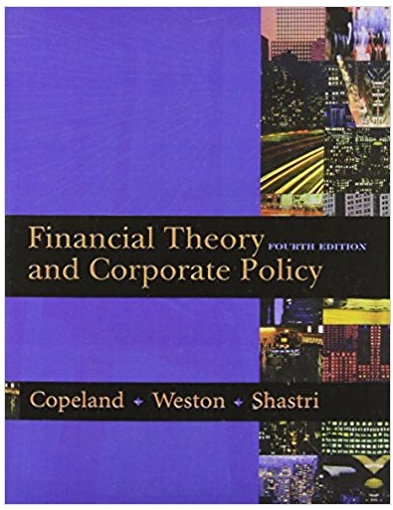Answered step by step
Verified Expert Solution
Question
1 Approved Answer
2-12. (Interest rate determination) You're looking at some corporate bonds issued by Ford, and you are trying to determine what the nominal interest rate


2-12. (Interest rate determination) You're looking at some corporate bonds issued by Ford, and you are trying to determine what the nominal interest rate should be on them. You have determined that the real risk-free interest rate is 3.0%, and this rate is expected to continue on into the future without any change. In addition, inflation is expected to be constant over the future at a rate of 3.0%. The default-risk premium is also expected to remain constant at a rate of 1.5%, and the liquidity-risk premium is very small for Ford bonds, only about 0.02%. The maturity-risk premium is dependent on how many years the bond has to maturity. The maturity- risk premiums are as follows: Bond Matures In: Maturity-Risk Premium: 0-1 year 0.07% 0.35% 1-2 years 2-3 years 3-4 years 0.70% 1.00% Given this information, what should the nominal rate of interest on Ford bonds maturing in 0-1 year, 1-2 years, 2-3 years, and 3-4 years be? 2-13. (Term structure of interest rates) You want to invest your savings of $20,000 in government securities for the next 2 years. Currently, you can invest either in a security that pays interest of 8% per year for the next 2 years or in a security that matures in 1 year but pays only 6% interest. If you make the latter choice, you would then reinvest your savings at the end of the first year for another year. Why might you choose to make the investment in the 1-year security that pays an interest rate of only 6%, as opposed to investing in the 2-year security paying 8%? Provide numerical support for your answer. Which theory of term structure have you supported in your answer? 2.14 (Yield curve) If yields on Treasury securities were currently as follows: 1. Plot the yield curve. 2. Explain this yield curve using the unbiased expectations theory and the liquidity preference theory. Chapter Summaries: The Financial Markets and Interest Rates Term 6 months Yield 1.0% 1.7% 1 year 2.1% 2 years 3 years 2.4% 2.7% 4 years 2.9% 5 years 3.5% 10 years 3.9% 15 years 20 years 30 years 4.0% 4.1% 2-15. (Unbiased expectations theory) Currently you have $50,000 that you would like to invest for 2 years and are considering buying a government security maturing in 1 year that pays 3% annually. If you do this, you will also have to purchase another 1-year security at the end of the first year. The alternative is to invest in a government security that matures in 2 years; currently, 2-year government securities are paying 3.5% annually. If you invest your money for 1 year and then after 1 year reinvest it for another year, what rate will you have to earn in order to make the two alternatives equal? 2
Step by Step Solution
There are 3 Steps involved in it
Step: 1

Get Instant Access to Expert-Tailored Solutions
See step-by-step solutions with expert insights and AI powered tools for academic success
Step: 2

Step: 3

Ace Your Homework with AI
Get the answers you need in no time with our AI-driven, step-by-step assistance
Get Started


